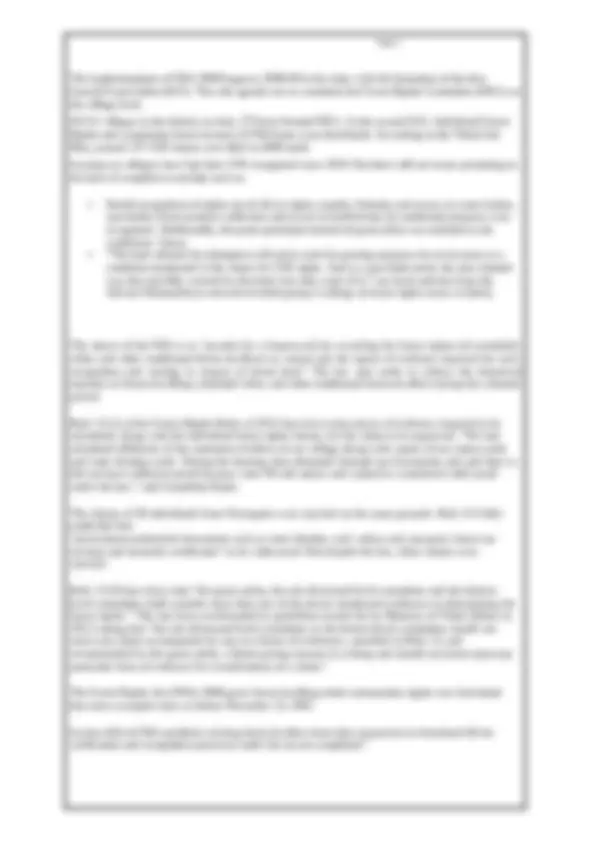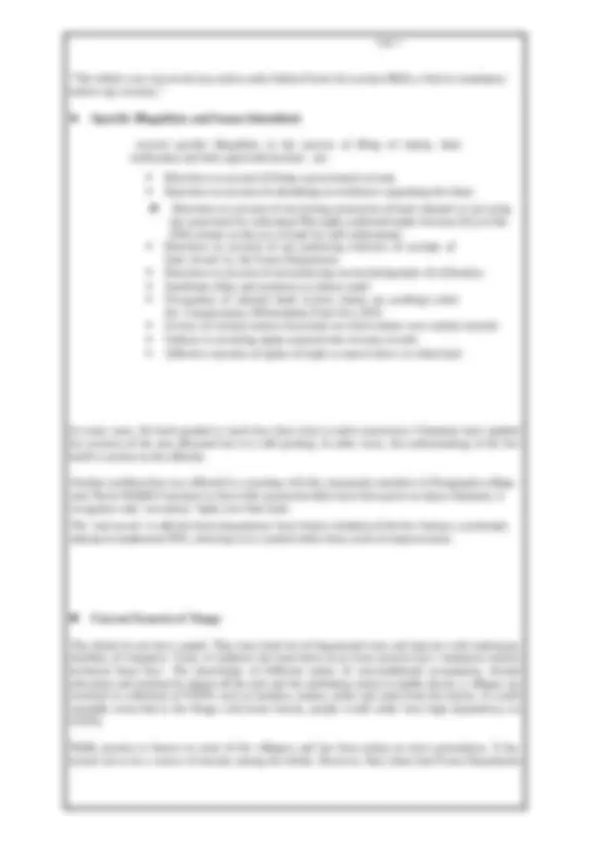





Study with the several resources on Docsity

Earn points by helping other students or get them with a premium plan


Prepare for your exams
Study with the several resources on Docsity

Earn points to download
Earn points by helping other students or get them with a premium plan
Community
Ask the community for help and clear up your study doubts
Discover the best universities in your country according to Docsity users
Free resources
Download our free guides on studying techniques, anxiety management strategies, and thesis advice from Docsity tutors
Case of the dangs of gujrat as an overview of the tribal FRA implementation
Typology: Study Guides, Projects, Research
1 / 5

This page cannot be seen from the preview
Don't miss anything!




Introduction The Dangs, the smallest district in Gujarat, is a thickly forested and tribal-dominated region that has been away from the ‘developmental’ paradigm till today. Some 77.5 per cent of its area is under forest cover, according to the State of Forest Report by the Union Ministry of Environment, Forest and Climate Change. It is home to tribal communities like the Bhils, Warlis, Kunbis, Kotwalias and Kolchas, collectively known as ‘Dangis’. Malki Practice in the Dangs Malki is a source of livelihoods for the tribal households in the Dangs. Under this practice, occupancy rights have been given only to those lands which were actually leased to Dangis and are in their natural position since 1st January 1970. The reserved trees on these lands continue to vest with Forest Department but the cultivators are entitled to lop them for the purpose of cultivation. Prior to 1997, 50% of the revenue from the logged trees was given to the land holder but now it has become 100%. For every tree being cut, at least 3 tree saplings should be planted in the malki land. Half of the forest area in the Dangs is declared as protected forests by law. The tribals are given ownership rights of land mainly for agricultural use. A provision is made that the owner if requests to cut trees and is ready to plant 3 times more trees, all such owners will be granted permission to cut maximum 50% of trees on their land or demanded trees (to cut) whichever is lesser. Overview of the scenario of Dang The districtlevel committee (DLC) constituted under the Forest Rights Act (FRA), 2006, has rejected the forest rights claims of 26 residents of Neempada village and of 25 residents of Nirgundmal village in Dang district in Gujarat, citing insufficient evidence in both the cases. The Bhil, Konkana (Kunvi) and Varli are the three main tribal communities living in Dang. On August 9, 2018, people from 311 villages gathered and rallied up to the district headquarters in Ahwa, protesting against the rejection of their claims and violation of the FRA. The DLC is currently hearing all individual forest rights claims pending since 2016. It has been rejecting all claims on the ground of 'insufficient evidence' and has been issuing eviction notices to all the claimants, which violates the provisions of the FRA. Section 4(5) of the Act categorically states that no member of a forestdwelling Scheduled Tribe or another traditional forest dweller shall be evicted or removed from forestland under his occupation until the recognition and verification procedure is complete. The 26 residents of Neempada had filed claims to forestland under the FRA in 2008. After eight years of delay, in 2016, the subdivisional committee (at the block level) rejected all their claims, followed by the DLC. The village residents claim that officials from the state forest department erected fences around the forestland belonging to 10 claimants from Neempada and dug up the land to carry out plantation drives while the claims were still pending. The affected residents submitted an application to the district collector on March 30, 2018, requesting appropriate action but to no avail. Digging of lands continued. On February 13, 2019, the Supreme Court ordered that all households whose rights claims under the FRA have been rejected should be evicted from forests by July 2019. After widespread criticism and protests it temporarily stayed its own order on February 28, 2019. Twentyone states, including Gujarat, were ordered to explain to the Supreme Court how the FRA claims were accepted or rejected. While the eviction was put on hold, the state governments conceded that the FRA implementation is deeply flawed and pleaded for more time to review the claims, which run into lakhs Forest Rights Act (FRA)
“The tribals were not served any notice under Indian Forest Act section 80(A), which is mandatory before any eviction,” Specific Illegalities and Issues Identified: several specific illegalities in the process of filing of claims, their verification and their approval/rejection. are:
Rejection on account of not having possession of land claimed or not using the same land for cultivation(The right conferred under Section 3(1) of the FRA relates to the use of land for self-cultivation)
fines levied by the Forest Department
the Compensatory Afforestation Fund Act, 2016
In some cases, the land granted is much less than what is under possession. Claimants have applied for revision of the area allocated but it is still pending. In other cases, the understanding of the Act itself is unclear to the officials. Another problem that was reflected in a meeting with the community members in Dongiamba village near Purna Wildlife Sanctuary is that while possession titles have been given to many claimants, it recognises only ‘secondary’ rights over their land. The ‘real owner’ is still the forest department. Such brazen violation of the law betrays a systematic attempt to implement FRA, reducing it to a symbol rather than a tool of empowerment. Current Scenario of Dangs The tribals do not have capital. They have land but of fragmented sizes and that too with inadequate facilities of irrigation. Years of isolation has kept them away from present day’s minimum needed technical know-how. The knowledge of different nature of non-traditional occupations, formal education and training for almost all the jobs and the marketing system is totally absent. y villages are involved in collection of NTFPs such as bamboo, mahua, tendu and amla from the forests. It would normally seem that in the Dangs with dense forests, people would rather have high dependency on NTFPs. Malki practice is known to most of the villagers and has been going on since generations. It has turned out to be a source of income among the tribals. However, they claim that Forest Department
officials often resort to bribes to get the processing done faster. The overhead expenses are also to be borne by the tree owners. This leads to a lesser amount being paid finally to the beneficiary. This amount in turn has to be distributed in the household. This money used judicially is helpful to the tribals. But some of them get trapped in loan cycles which results in further poverty of the household. Power abuse and corruption is frequent in claiming individual rights under FRA 2006. Often the successful claimants were the FRC heads or the Sarpanch’s family members. Land is directly related to the food security of the tribals and hence quality of land and irrigation form an important aspect. Both these appeared as a problem to almost all households that we surveyed.